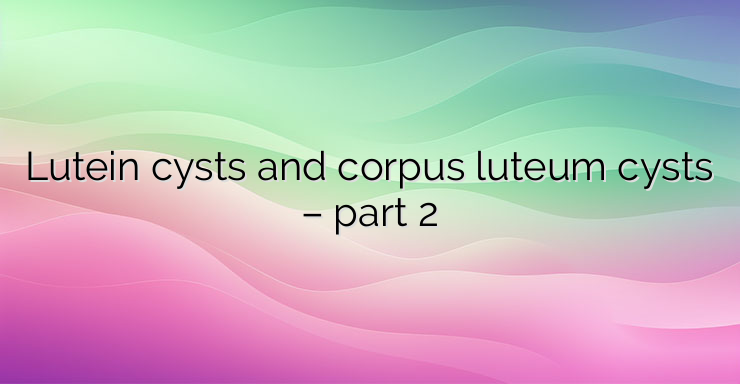Cystic formations of the ovaries in women are follicular cysts, cysts formed in the course of endometriosis, lutein cysts and cysts of the corpus luteum. (To the first part of the material) 1. Lutein cysts are also referred to as theca-lutein cysts. They are the result of increased stimulation with the luteinizing hormone. Overstimulation of ovarian follicles can be caused by increased levels of the hormone or increased sensitivity to it. In order for the hormones to have an impact on the organs they regulate, specific structures – receptors – are located on the cells through which they bind the hormone. Luteinizing hormone, chorionic gonadotropin hormone, follicle-stimulating hormone, and thyroid-stimulating hormone share the same alpha chain in their structure. Their difference is a result of the beta chain that goes into their construction. Theca – lutein cysts are formed in 50% of cases in women with molar pregnancy. In this condition, the levels of chorionic gonadotropin hormone are increased many times due to the enlarged trophoblast. Another disease in which theca – lutein cysts develop is chorionic carcinoma. In 10% of cases of women with this diagnosis, the presence of theca – lutein cysts is found. The formation of the cysts may be related to increased stimulation of the ovaries in the course of preparation for IVF. Other causes of formation of theca – lutein cysts are the wear and tear of a twin or multiple pregnancy and Rh-isoimmunization. Theca – lutein cysts are bilateral, that is, they affect both ovaries. Their sizes can reach 10-20 cm in diameter. They are multi-chambered and bounded by a thin wall. In their presence, the ovaries increase in size. The fluid that fills the cysts is pale yellow or bloody. Most often, they occur without clearly expressed symptoms and are discovered during a routine examination. Women may have complaints of discomfort and heaviness low in the abdomen. NEWS_MORE_BOX Theca – lutein cysts are most often formed during pregnancy. After cessation of luteinization – stimulation with luteinizing hormone, they most often undergo reverse development. The most common complication of these cysts is torsion – rotation around their axis. It proceeds with the development of an acute surgical abdomen. 2. Corpus luteum cysts develop in the structure that forms after the follicle bursts and the egg is released during the ovulation process. Part of the cells of the ruptured follicle turn into lutein cells, which have accumulated yellow pigment. For this reason, the structure formed on the surface of the ovary, at the site of the ruptured follicle, is referred to as the corpus luteum. In the presence of pregnancy, it becomes the corpus luteum of pregnancy, whose main function is the formation and synthesis of progesterone during the first 12 weeks of pregnancy. In the absence of fertilization, the corpus luteum undergoes reverse development and becomes a white corpuscle.The formation of the corpus luteum cyst is associated with increased values and prolonged synthesis of progesterone. To be defined as a cyst, its diameter must be more than 3 cm. The sizes of the cysts can reach up to 10-15 cm in diameter. The walls of the cystic formation are thin. Due to the prolonged production of progesterone, a woman’s menstruation can be disturbed. It may have a longer duration or be absent. Corpus luteum cysts can rupture easily and lead to sharp abdominal pain. The most common complication is blood in the peritoneal cavity as a result of rupture of the cyst. This condition presents as an acute surgical abdomen and requires surgical treatment.


Leave a Reply